Tinker Extraordinaire
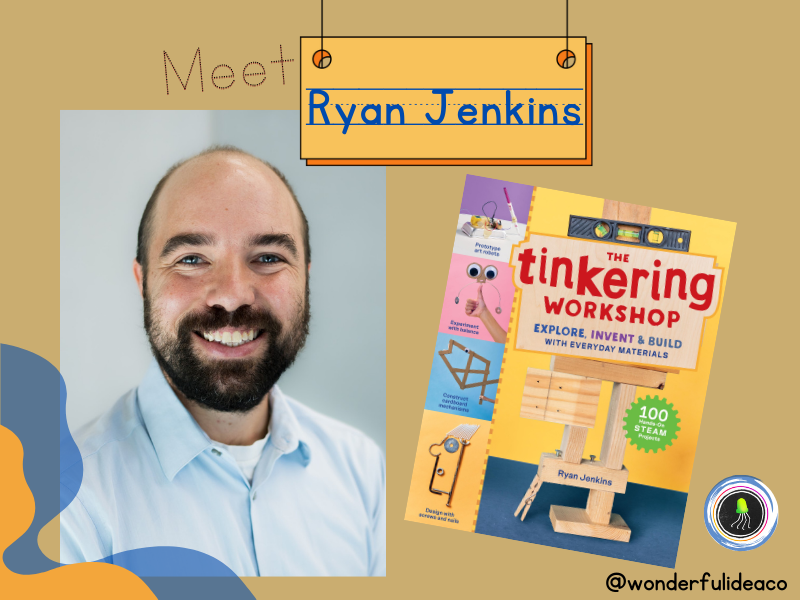
This month, we are excited to introduce you to a brilliant educator and author, Ryan Jenkins, the cofounder of Wonderful Idea Co., a design studio focusing on STEAM education.
The time was right to feature Ryan, because he has a brand new book coming out this October, The Tinkering Workshop! A colorful chapter explores LEDs and hand-crafted circuits, with a variety of playful activities related to creating with light. Of note, one of the “Tinkering Inspirations” highlighted in this fun-packed resource is Chibitronics CEO and cofounder Jie Qi!
When Ryan isn’t jaunting around the world building prototypes and leading tinkering workshops, he still makes time for his own creative pursuits. For example, Ryan will be participating as a guest maker on the Chibitronics #LightUpPopUpTober team this year! Keep an eye out to see what he comes up with for the prompt “Recycle” near the end of the month!
Join us for #PopUpTober for a chance to win a copy of The Tinkering Workshop!
Or, you can pre-order a copy and get tickets to the online launch party below.
Can you please introduce yourself?
I’m Ryan Jenkins, an educator and learning designer from California, currently living in Freiburg im Breisgau, Germany. I got my start as museum educator at the Exploratorium Tinkering Studio in San Francisco and now I run a creative studio called Wonderful Idea Company.
How would you describe what you do? What do you most enjoy about it?
In my work, I develop ways for people to playfully explore art, science and technology through the process of tinkering. This includes leading workshops for teachers, putting together kits of materials for at-home projects and prototyping hands-on experiences for museum visitors.
What do you most enjoy making?
I like creating project examples that are clear enough so that people understand what’s possible in the activities but scrappy enough so that learners feel they can construct something different or better than the initial versions.
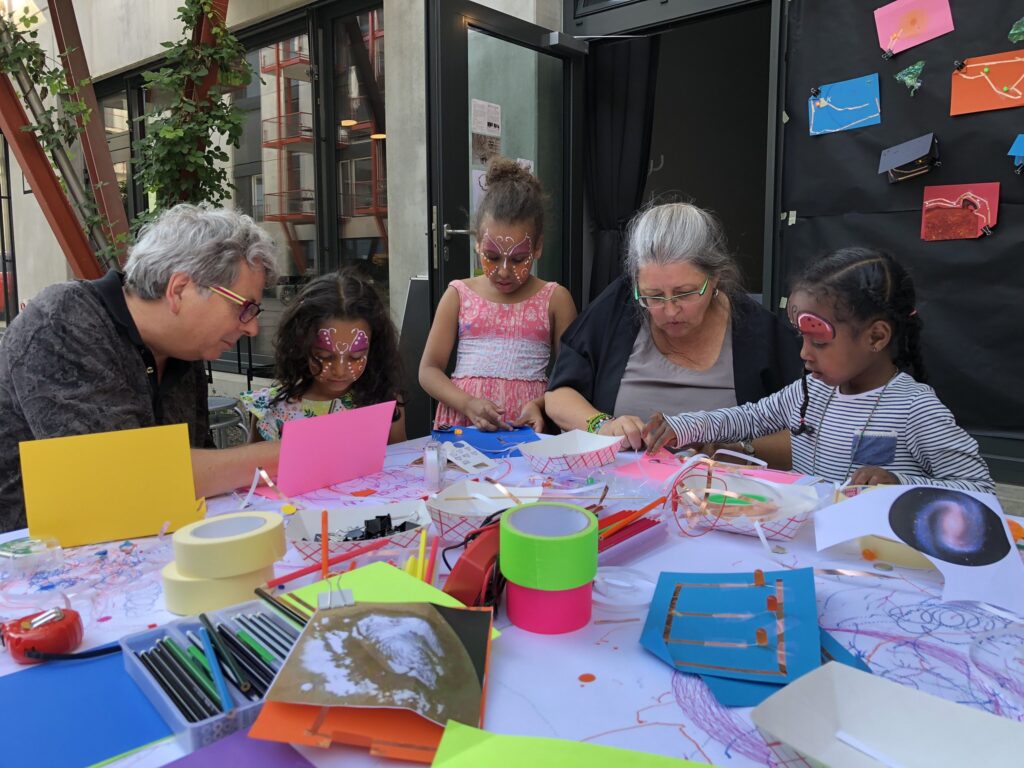
Please tell us about your work with the Wonderful Idea Company.
Wonderful Idea Company continues to be the umbrella for many experiments around teaching and learning with art, science and technology. I’m very interested to connect with other organizations like Cabaret Mechanical Theater, Dokk1 Public Library and Tinkertank. These collaborations open up new possibilities for tinkering materials, projects, facilitation strategies and environments.
Some of the more recent areas for exploration include sustainability and renewable energy, artificial intelligence and collaborating with professional prototyping networks at a distance. At the same time, it’s rewarding to be constantly circling back to classic tinkering themes like marble machines, light and optics, automata and balance to figure out new and different ways to explore these ideas.

I most enjoy it when I am surprised by unique and innovative things that the kids and adults come up with in the course of their investigations. Even if I have led a tinkering activity many times, there will always be new ideas and directions that I didn’t expect.
What joys and challenges have you encountered during your creative (and/or professional) journey?
Some of the biggest joys have involved traveling around the world and doing tinkering workshops for surprising audiences like Tibetan Buddhist monks, Saudi Arabian high school students and LEGO designers in Denmark.
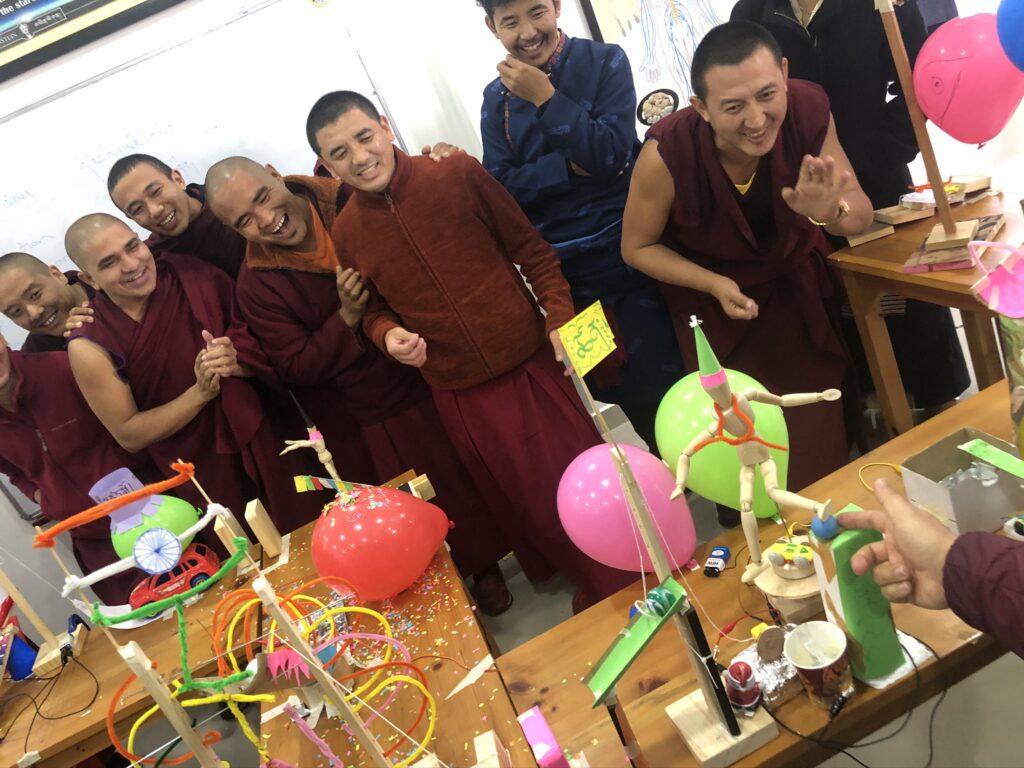
Some of these workshops have taken place in unexpected environments like a former Italian monastery full of centuries old frescos or surrounded by cutting edge technology at the MIT Media Lab. It’s been a joy to discover that all over the world people respond similarly to playful, open and self-directed learning environments.
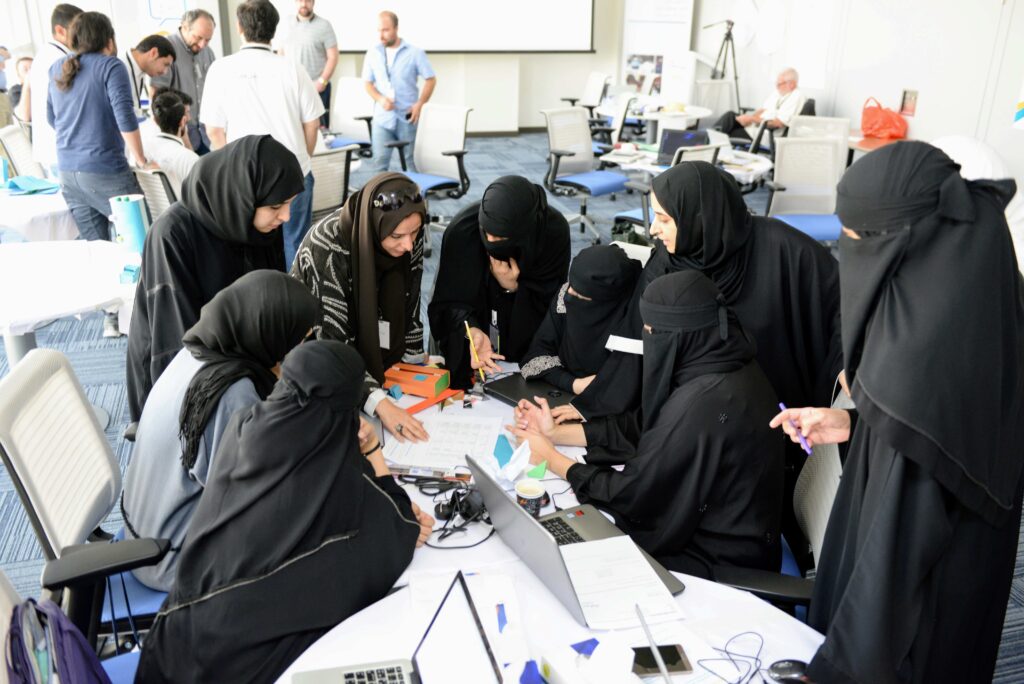
Some of the challenges that I’ve encountered have been related to capturing, evaluating and articulating the value of learning through tinkering. Traditional research methods often struggle to capture the complexity of a constructionist learning environment and it takes a lot of creative people working together to design qualitative research questions and studies.
What do you want people to know about your creative process?
It’s important that educators and learning developers who design tinkering experiences go through the process of tinkering ourselves. When working on something new, I often try things that don’t work, get frustrated, ask for help, observe what’s not working and usually end up with something quite different from what I originally planned.
It’s also really important to share and test ideas before they are completely finished. Posting about these half-baked ideas online or trying them out with learners provides many new ideas and directions for next steps.
What inspires you?
I’m inspired by a wide variety of artists and often take snippets of ideas from their work as a jumping off point for tinkering projects. Makers who are confident to share their process of working with materials, tools and ideas inspire me to do the same thing and I’m fascinated to see how artists combine everyday materials and new technologies.
How are you using paper circuitry or Chibitronics in your creations?
I’ve been lucky enough to collaborate with Jie Qi on paper circuit ideas on and off for the past fifteen years or so. I think that Chibitronics materials and prompts offer a perfect way to blend art, science and engineering. I’ve done many traditional paper circuit workshops, but I’m also interested in pushing the bounds of collaborative or immersive explorations with these tools.
A favorite project that used the programmable Chibitronics elements, was an interactive digital mural that we made at the Bay Area Maker Faire in 2018. Participants clipped unique paper circuit creations to a wall with pre-programmed Chibitronics boards and wires attached.
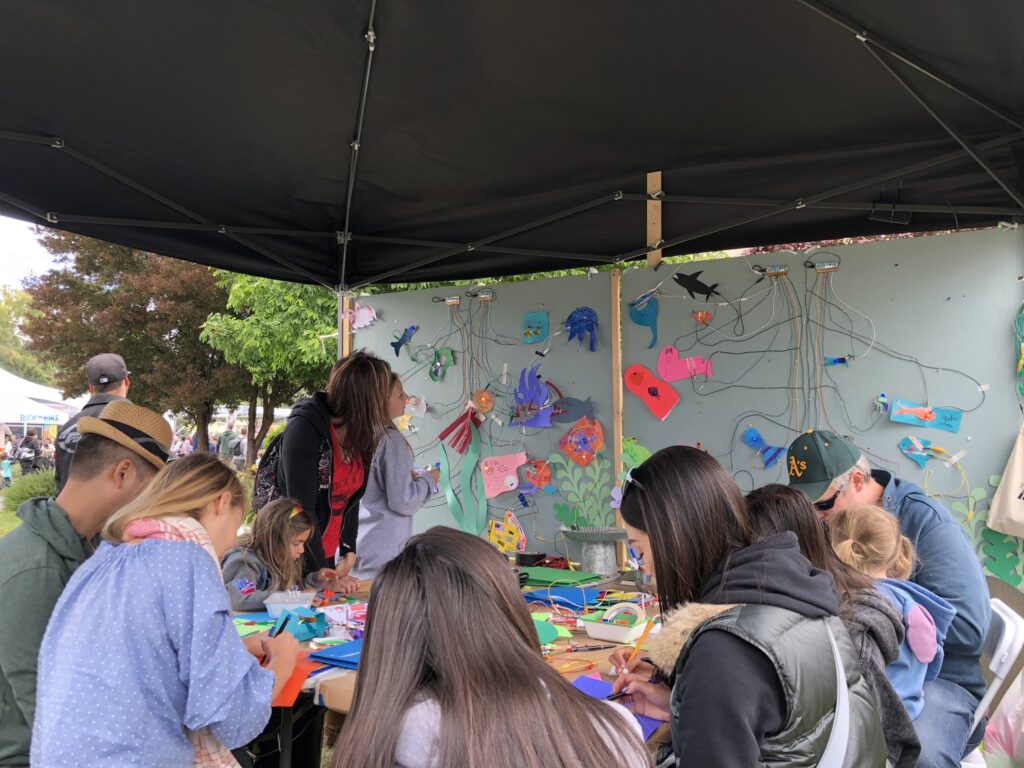
At the end of the event we had a fading, blinking underwater themed scene. Another project that I drew on for the ‘glow city’ chapter of The Tinkering Workshop originated in a summer camp program where learners made cardboard structures of different city-themed elements and lit them up with programmed LEDs controlled by Chibitronics hardware. In both of these examples tinkerers contributed to something bigger than their own individual projects.
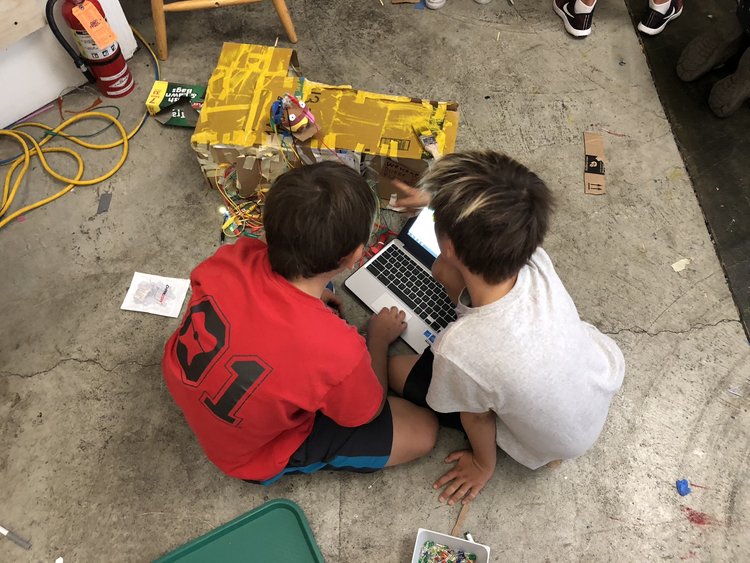

What can you tell us about your new book, The Tinkering Workshop?
It’s been a really interesting and joyful process to put together this new book that is full of possibilities for making and tinkering with everyday materials around a variety of themes.

The book is arranged around twenty “materials highlight” pages that give a bunch of simple explorations you can do with everyday objects like clothespins, LEDs or recycled paper cups.
We wanted to let learners easily sort projects by materials that are available to them and be able to get started tinkering right away. These low-threshold starting points let readers have a quick success that sparks a new idea about what to try next.
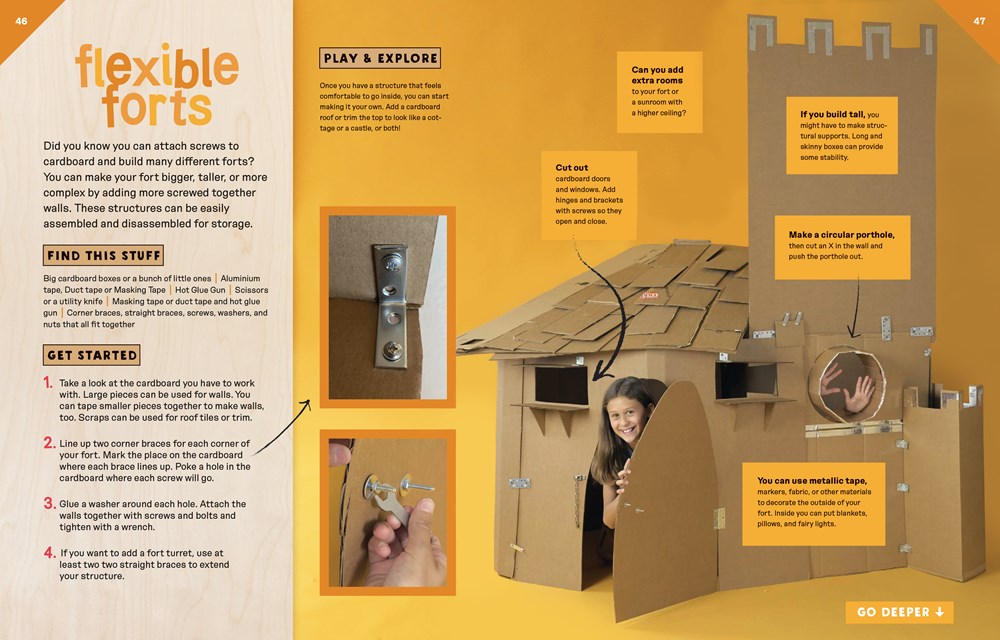
The book shows twenty playful explorations organized around themes like electricity, mechanisms, wind and water and balance.
I wanted to make sure that the ‘instructions’ take up as little space as possible so that the majority of these pages gives suggestions about how you can play and explore in your own way. I tried to show multiple examples for each project so that it’s clear that everyone will have a different outcome. For each of these activities there’s a section with possibilities to go deeper, artists that work with similar ideas and connections to STEAM concepts.

One of the most fun parts of putting together the book was working with the kid tinkerers who created and built the projects that we photographed. We spent one week on the photoshoot at the Storey Books HQ in North Adams Massachusetts and each day there were multiple learners and multiple activities. As our amazing photographers documented everything, I showed the kids how to use tools, facilitated as they worked through the projects and helped them prototype their ideas. In the book we wanted to focus less on seeing smiling kids with their finished projects but instead show their hands at work, testing out the creations as they were deeply engaged in the process of tinkering.
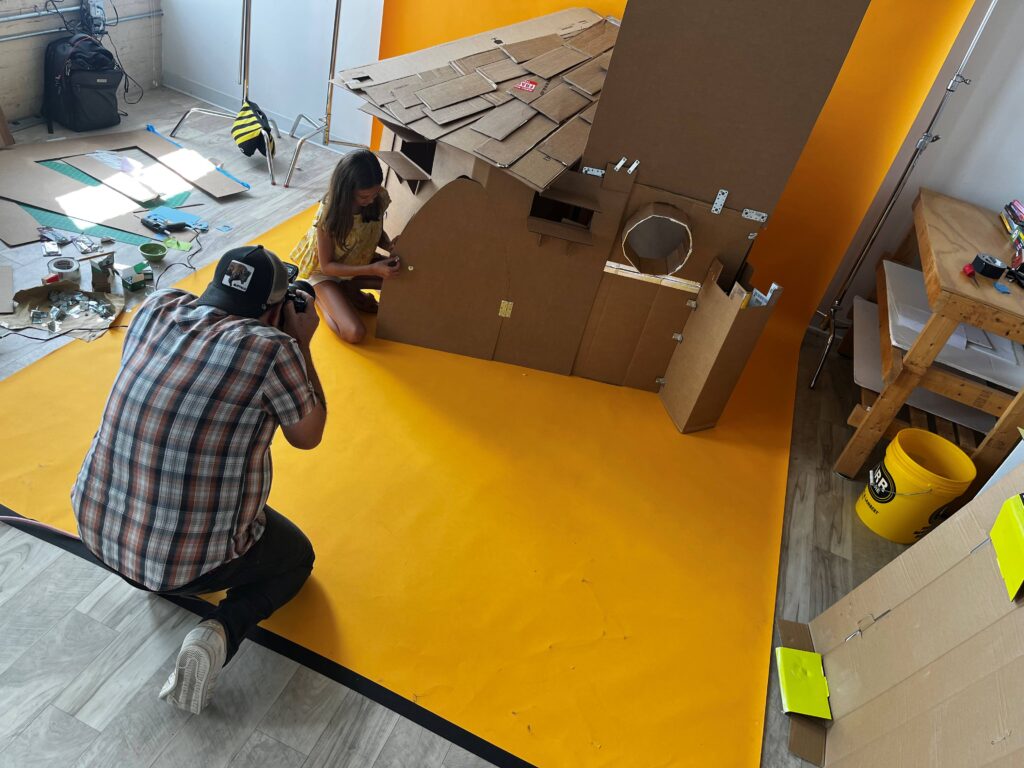
The goal with Wonderful Idea Company is to always be experimenting and as much as possible and to share those experiments with other educators, designers, caregivers and young tinkerers. It’s been a spontaneous and unpredictable journey for the past seven years of trying to make things work as an independent studio, but that process has provided so many amazing learning moments along the way.
Where can people learn more about you and your work?
The best place to get the latest news about my work is the Wonderful Idea Co blog.
I post on Instagram and Twitter and Facebook a bit less often.
To learn more about the book you can go to https://wonderfulidea.co/the-tinkering-workshop.
Pre-order your own copy of The Tinkering Workshop or attend the Online Launch Party!
Copies of The Tinkering Workshop may be pre-ordered on Amazon!
Ryan is hosting an online launch party on October 15th! To learn more or to get a free ticket, visit Eventbrite.
